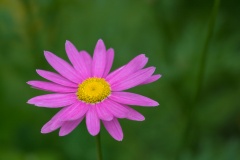Aster
| Infobox on Aster | |
|---|---|
| Example of Aster |  |
| Facts | |
| Origin | - |
| Stowage factor (in m3/t) | - |
| Humidity / moisture | - |
| Ventilation | - |
| Risk factors | - |
Aster
Contents
Description
Scientific name and introduction
Aster spp. The family Asteraceae, and the genus Aster include numerous species and cultivars used in horticulture. A. ericoides ‘Monte Casino’ is particularly important in the florist trade. Another important aster for florists is the China aster, Callistephus chinensis.
Quality characteristics and criteria
As with most members of the Asteraceae, immature flowers (ones harvested too early) will generally not open properly. Purchase as you would purchase chrysanthemums, more open (at least 75% open) than in a bud stage. Avoid specimens with yellowing leaves as this is an indication of improper storage and growing conditions.
Grading and bunching There are no grade standards as such, apart from the standard quality attributes of stem length, foliage quality, uniformity, and freedom from defects. Depending on species and cultivar, bunches may be prepared by stem number or by bunch size.
Ethylene sensitivity
Members of the Asteraceae are generally unaffected by exposure to moderate concentrations of ethylene.
Pretreatments
The vase-life of asters is often limited by poor water relations, demonstrated by wilting of the flowers and/or buds. Their vase-life has been shown experimentally to be extended by a 10-sec pre-treatment with a high concentration (1000 ppm) of silver nitrate, which is a very effective germicide.
Storage conditions
Store asters at 0° to 1°C.
Packing
Asters are packed in traditional flower boxes or hampers.
Special considerations
It is very difficult to make broad flower care recommendations for asters because of the large number of species and cultivars. Keep stems and vase solution clean. It is especially important with asters to remove leaves that might be in the water since bacteria grow quickly on leaves that are under water, contaminating the vase solution and leading to early wilting. Treat with a hydrating solution and prepare the preservative solution properly to minimize contamination by debris and micro-organisms.











